Home> Company News> How To Properly Set Up Your Pump Stroke
- AddressTianqiao, Beiyuan District, Jinan,Shandong
- Factory Addresstian qiao,jinan, shandong,China(Mainland)
- Worktime9:00-18:00(Beijing time)
- Phone(Working Time)86 0531-8299 9952
- Fax86 0531 -82990353
Pump stroke adjustment is a crucial aspect of maintaining optimal pump performance and efficiency. The stroke of the piston or plunger in the pump determines the volume of fluid being moved, and adjusting the stroke length can increase or decrease the volume of fluid moved. In this guide, we will discuss the steps to properly set up your pump stroke to ensure smooth operation and maximum output.
Properly setting up your pump stroke is essential for optimal pump performance and efficiency. Pump stroke adjustment can be done manually or automatically depending on the pump's design. Before making any adjustments, it is crucial to understand the basics of pump stroke adjustment and identify the correct stroke length for your specific application.
The correct stroke length for your pump depends on several factors, including the desired flow rate, the viscosity of the fluid being pumped, and the pump's maximum pressure rating. It is important to consult your pump's manual or a qualified technician to determine the correct stroke length for your specific application.
To adjust the pump stroke manually, the pump must first be stopped and isolated from the system. The stroke adjustment mechanism is usually located near the pump's drive motor and can be adjusted using a wrench or other tools. After making the necessary adjustments, the pump should be reconnected to the system, and the flow rate and pressure should be checked to ensure proper operation.
Some pumps feature an automatic stroke adjustment mechanism that continuously monitors the flow rate and adjusts the stroke length accordingly. These pumps use sensors to detect changes in the system's flow rate and adjust the stroke length accordingly to maintain a constant flow rate. Automatic stroke adjustment mechanisms can improve pump efficiency and reduce maintenance requirements.
When adjusting pump stroke, it is important to avoid common mistakes, such as adjusting the stroke length too much or too little, or failing to isolate the pump before making adjustments. It is also essential to ensure that the correct stroke length is used for the specific application to avoid damage to the pump or the system.
In conclusion, proper pump stroke adjustment is crucial for optimal pump performance and efficiency. By understanding the basics of pump stroke adjustment, identifying the correct stroke length for your pump, and avoiding common mistakes, you can ensure that your pump operates smoothly and efficiently. Regular maintenance and adjustment of the pump stroke can help to reduce downtime, increase efficiency, and extend the life of your pump.
Understand the Basics of Pump Stroke Adjustment
Proper pump stroke adjustment is crucial for ensuring that a pump operates efficiently and delivers maximum output. Pump stroke adjustment involves changing the length of the piston or plunger stroke to alter the volume of fluid being moved. A longer stroke increases the volume of fluid moved, while a shorter stroke reduces the volume of fluid moved. The stroke can be adjusted manually or automatically depending on the pump's design.
To manually adjust the pump stroke, the pump must first be stopped and isolated from the system. The stroke adjustment mechanism is usually located near the pump's drive motor and can be adjusted using a wrench or other tools. After making the necessary adjustments, the pump should be reconnected to the system, and the flow rate and pressure should be checked to ensure proper operation.
Automatic stroke adjustment mechanisms are also available on some pumps. These pumps use sensors to detect changes in the system's flow rate and adjust the stroke length accordingly to maintain a constant flow rate. Automatic stroke adjustment mechanisms can improve pump efficiency and reduce maintenance requirements.
It is important to note that proper stroke adjustment depends on several factors, including the desired flow rate, the viscosity of the fluid being pumped, and the pump's maximum pressure rating. It is important to consult your pump's manual or a qualified technician to determine the correct stroke length for your specific application.
Proper pump stroke adjustment is essential for smooth operation and maximum output. By understanding the basics of pump stroke adjustment and how to properly adjust the stroke length, you can ensure that your pump operates efficiently and delivers optimal performance.
Identifying the Correct Stroke Length for Your Pump
When it comes to determining the correct stroke length for your pump, several factors need to be considered. The first factor to consider is the desired flow rate. The flow rate is the volume of fluid that needs to be moved per unit of time, and it determines the stroke length required to achieve the desired output.
The viscosity of the fluid being pumped is another critical factor to consider. The viscosity of the fluid affects the pump's ability to move the fluid and the amount of energy required to do so. Highly viscous fluids require longer strokes to move, while less viscous fluids require shorter strokes.
The pump's maximum pressure rating is also an important factor to consider. The maximum pressure rating determines the maximum force that the pump can generate, which affects the stroke length required to achieve the desired output. Using a stroke length that exceeds the pump's maximum pressure rating can result in pump failure or damage.
In addition to these factors, it is also essential to consider the pump's design and operating conditions. Some pumps may have specific stroke length requirements or limitations that must be considered when setting up the pump stroke. It is also important to consider the operating conditions, such as temperature and pressure fluctuations, which can affect the pump's performance and efficiency.
Consulting the pump's manual or a qualified technician can help you determine the correct stroke length for your pump based on these factors and ensure optimal pump performance and efficiency.
Adjusting Pump Stroke Manually
When adjusting the pump stroke manually, the first step is to stop the pump and isolate it from the system to prevent fluid from flowing through the pump. This can be done by closing valves or disconnecting the pump from the piping system.
Next, locate the stroke adjustment mechanism on the pump. This is typically located near the pump's drive motor and can be adjusted using a wrench or other tools.
Using the pump manual or a qualified technician's guidance, adjust the stroke length by turning the adjustment mechanism either clockwise or counterclockwise, depending on the pump's design. The pump's stroke length should be adjusted incrementally and tested after each adjustment to ensure the desired flow rate and pressure are achieved.
Once the stroke length has been adjusted to the desired setting, reconnect the pump to the system, open the valves, and start the pump. The flow rate and pressure should be checked to ensure that the pump is operating correctly.
Regularly monitoring and adjusting the pump stroke can improve pump efficiency and reduce operating costs. However, improper pump stroke adjustment can lead to decreased performance, increased wear and tear, and even pump failure. Therefore, it is important to follow proper procedures and consult a qualified technician or the pump manual when making any adjustments to the pump stroke.
Adjusting Pump Stroke Automatically
When it comes to adjusting pump stroke, automatic adjustment is a popular and efficient method. Automatic stroke adjustment mechanisms allow pumps to maintain a constant flow rate by continuously monitoring the system's flow rate and adjusting the stroke length accordingly.
Automatic stroke adjustment mechanisms come in various designs, but the most common type uses sensors to detect changes in the system's flow rate. The sensors send feedback to a controller that adjusts the stroke length to maintain the desired flow rate.
One advantage of automatic stroke adjustment is that it eliminates the need for manual adjustment, which can be time-consuming and require specialized knowledge. Automatic adjustment also ensures that the pump is operating at its optimal efficiency, reducing energy consumption and extending the pump's lifespan.
Another advantage of automatic stroke adjustment is that it can improve system reliability by maintaining a constant flow rate. When flow rate is inconsistent, it can cause system components to wear out faster, leading to increased maintenance requirements and downtime.
However, automatic stroke adjustment is not suitable for all applications. For instance, in applications where the flow rate varies significantly, manual adjustment may be more appropriate. Additionally, automatic stroke adjustment mechanisms can be costly and complex, which may not be necessary for smaller or less complex systems.
Overall, automatic stroke adjustment is a useful method for maintaining optimal pump performance and efficiency, especially in larger and more complex systems with a consistent flow rate. However, it is important to consult with a qualified technician to determine whether automatic adjustment is suitable for your specific application.
Common Mistakes to Avoid
When it comes to adjusting pump stroke, there are a few common mistakes that you should avoid to ensure optimal performance and avoid potential damage to the pump or the system.
One common mistake is adjusting the stroke length too much or too little. Overadjusting the stroke length can result in the pump operating outside of its recommended performance range, leading to reduced efficiency and increased wear and tear. Underadjusting the stroke length can also result in reduced efficiency and poor pump performance.
Another mistake to avoid is failing to isolate the pump before making adjustments. This can lead to damage to the system and potential safety hazards. Before adjusting the pump stroke, it is essential to stop the pump and isolate it from the system to ensure safe and effective adjustment.
It is also important to ensure that the correct stroke length is used for the specific application. Using the wrong stroke length can result in reduced efficiency, poor performance, and potential damage to the pump or the system.
Finally, it is essential to follow the manufacturer's instructions and guidelines when adjusting the pump stroke. This can help to ensure proper operation and prevent potential problems or issues down the line.
By avoiding these common mistakes and following proper pump stroke adjustment procedures, you can ensure that your pump operates smoothly and efficiently, providing optimal performance and minimizing maintenance requirements.
Conclusion
Proper pump stroke adjustment is essential for optimal pump performance and efficiency. In this guide, we have discussed the steps to properly set up your pump stroke to ensure smooth operation and maximum output. By understanding the basics of pump stroke adjustment, identifying the correct stroke length for your pump, and avoiding common mistakes, you can ensure that your pump operates smoothly and efficiently.
To summarize, pump stroke adjustment involves adjusting the length of the piston or plunger stroke to alter the volume of fluid being moved. The correct stroke length for your pump depends on several factors, including the desired flow rate, the viscosity of the fluid being pumped, and the pump's maximum pressure rating.
Pump stroke adjustment can be performed manually or automatically, depending on the pump's design. Manual adjustment involves stopping and isolating the pump from the system, adjusting the stroke length using a wrench or other tools, and reconnecting the pump to the system while checking the flow rate and pressure. Automatic adjustment uses sensors to detect changes in the system's flow rate and adjust the stroke length accordingly to maintain a constant flow rate.
When adjusting pump stroke, it is important to avoid common mistakes, such as adjusting the stroke length too much or too little, or failing to isolate the pump before making adjustments. It is also essential to ensure that the correct stroke length is used for the specific application to avoid damage to the pump or the system.
By following the steps outlined in this guide, you can ensure that your pump stroke is properly adjusted for optimal performance and efficiency.


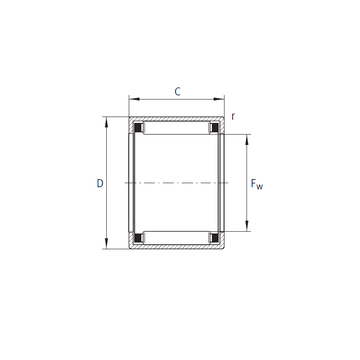 SCE5612 INA Needle Roller Bearings
SCE5612 INA Needle Roller Bearings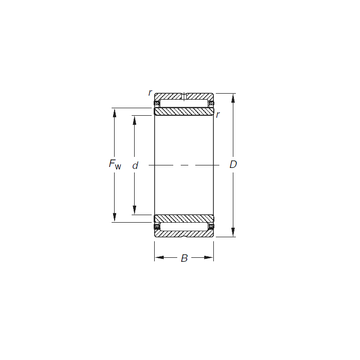 NKJ20/16 Timken Needle Roller Bearings
NKJ20/16 Timken Needle Roller Bearings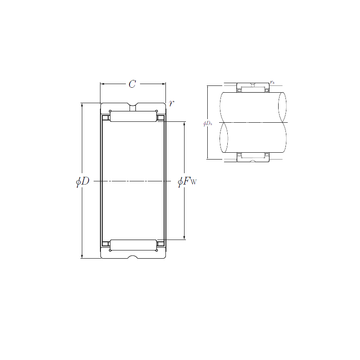 RNA4976 NTN Needle Roller Bearings
RNA4976 NTN Needle Roller Bearings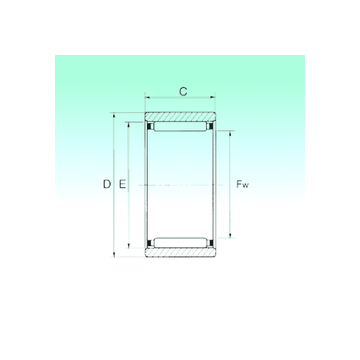 RNAO 35x47x16 NBS Needle Roller Bearings
RNAO 35x47x16 NBS Needle Roller Bearings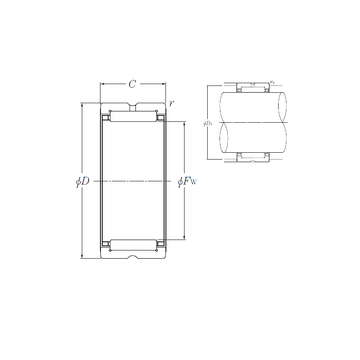 NK42/20R NTN Needle Roller Bearings
NK42/20R NTN Needle Roller Bearings